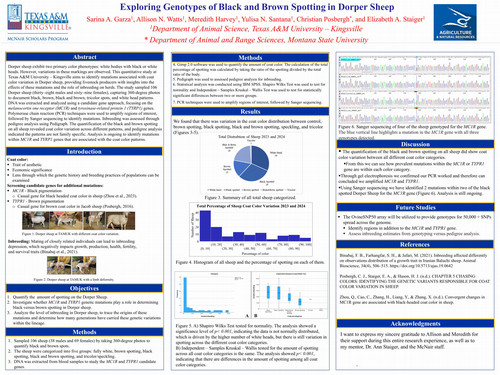Dorper sheep exhibit two primary color phenotypes: white bodies with black or white heads. However, variations in these markings are observed. This quantitative study at Texas A&M University – Kingsville aims to identify mutations associated with coat color variation in Dorper sheep, providing livestock producers with insights into the effects of these mutations and the role of inbreeding on herds. The study sampled 107 Dorper sheep (thirty–eight males and sixty–nine females), capturing 360-degree photos to document black, brown, black and brown, tricolor spots, and white head patterns. DNA was extracted and analyzed using a candidate gene approach, focusing on the melanocortin one receptor (MC1R) and tyrosinase-related protein 1 (TYRP1) genes. Polymerase chain reaction (PCR) techniques were used to amplify regions of interest, followed by Sanger sequencing to identify mutations. Inbreeding was assessed through pedigree analysis using Pedigraph. The quantification of the black and brown spotting on all sheep revealed coat color variation across different patterns, and pedigree analysis indicated the patterns are not family specific. Analysis is ongoing to identify mutations within MC1R and TYRP1 genes that are associated with the coat color patterns.
Faculty Mentor: Dr. Elizabeth Staiger
Department of Animal Science and Veterinary Technology


